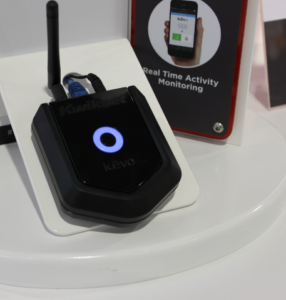The first generation of the Kevo came out in 2013, and the second iteration in 2016 added new smart home integrations and connectivity. We think the Kevo Touch-to-Open still has some compelling perks, but we’ve seen even better features from options like August and Schlage. But, if you want that cool tap-to-open sensation, the Kevo won’t let you down. When the lock detects that your device is outside the door (and you’re probably there with it), it lets you tap the metal exterior to unlock your door. It flashes a fancy blue LED light when the door unlocks and voilà, open sesame. That’s a good thing, even if it doesn’t feel like it when you’re standing on your porch with both arms full of groceries trying to find a way to touch the lock. We’ve seen other auto unlocks malfunction sometimes and unlock people’s doors when they enter through their garage. This means your front door could just be sitting there unlocked without you realizing it.
Bluetooth functionality Control through the Kevo app Electronic “eKeys” you can send to guests who need access Backup keyhole SmartKey rekeying feature Two design options (round and square) Power by four AA batteries DIY installation ANSI/BHMA security Grade 2
The grades go from grade 1 to grade 3, with grade 1 being the best and most secure. The Kevo, with its Grade 2 rating, is pretty average. Most smart door locks we’ve seen are Grade 2, and that’s fine. But if you want to up your security game a bit, we recommend the Schlage Encode Smart Wi-Fi Deadbolt. But if you want access to any of the Kevo’s available integrations, you’re going to need to subscribe to Kevo Plus. It’s the gateway that lets you do all of Kevo’s cool smart home stuff. And it’s not weird for a smart lock to need a gateway or bridge before you can control the lock remotely and have it work with other smart devices. But $99.99 is a bit pricey for that kind of device. For example, the August Connect Wi-Fi Bridge costs around the neighborhood of $80. Instead of codes, Kevo uses a feature called eKeys. You can send digital eKeys to guests, including temporary, scheduled, or “anytime” guests. Temporary guests will have access for 24 hours. Scheduled guests will have access during set timeframes you assign. And anytime guests will have access, well, anytime. (That one’s a bit obvious.) The annoying thing about eKeys is that your guests have to download the Kevo app and give it access to their device’s location. Your technophobe great aunt Sarah might not want to give the Kwikset overlords her location info. (And really, who can blame her.) Of course, you can always give guests a good old fashioned metal key to use instead. But we prefer the ease and customization of access codes on a keypad. Kwikset gives you step-by-step guides and illustrations in the Kevo box, or there’s a full installation walk-through on the Kevo app. Expect to spend about 20 minutes getting everything put together. That said, we prefer smart locks with keypad entry, especially if you have a lot of guests who need access codes. Home automation: Kevo has some decent smart home features, but you’ll need a Kevo Plus subscription to get access to them. The subscription/necessary Bluetooth gate will cost you about $100. Installation: Deadbolt installation looks intimidating, but it’s actually not too bad. Plan to spend around 20 minutes installing your Kevo Touch-to-Open Smart Lock. Do you use a smart door lock? Do you prefer a keypad, or would you rather use your phone? Tell us about your experience in the comments!


